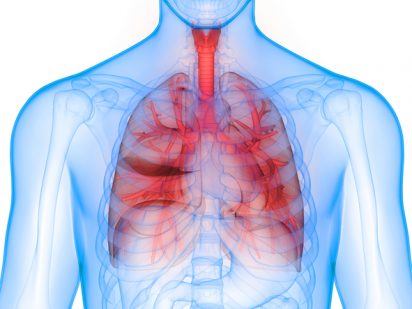How many times have you found yourself breathless after doing just a little work and passed it off as being out of shape, or maybe as a side effect of smoking? How many times have you looked for that parking spot that is just a little closer, or looked for the elevator instead of taking the steps? If any of these scenarios sound familiar, you just might have Chronic Obstructive Pulmonary Disease, or COPD.
Many patients do not seek out medical attention for the symptoms of COPD until a significant amount of their lung function has been lost. Statistics show that most COPD patients will not seek out help until half of their lung function is gone.
November is COPD Awareness Month and gives us another opportunity to remind people how serious COPD is. It is estimated that more than 15 million people have COPD, which is now the third leading cause of death in the United States. Nearly 7 percent of North Dakota’s population has COPD. The stark truth about all of this is that for nearly all of these people, COPD is preventable. Cigarette smoke is implicated in over 90 percent of cases of COPD. Even second-hand smoke has been shown to be a risk factor. While there are some inheritable diseases that cause COPD and some environmental or industrial exposures that are linked to COPD, those causes pale in comparison to the devastating effects of cigarette smoke.
COPD causes the airways of the lung to not function correctly and ultimately obstructs normal airflow. These patients have shortness of breath; as the disease worsens, even simple activities become difficult because of dyspnea. A cough and sputum production can accompany the shortness of breath. The symptoms of COPD can vary from day to day, and exacerbations can make breathing very difficult at times.
There is no cure for COPD. The changes to the lungs tend to be permanent. The best approach to COPD is to prevent the damage to the lungs through smoking abstinence or early cessation. In this case, the adage that an ounce of prevention is worth a pound of cure could not be truer. There are many therapies that can help treat the symptoms of COPD. A medical provider can help you make the best decisions for what treatments will work best for you. In some cases, oxygen may be prescribed. All patients benefit from exercise and activity. Some patients may also benefit from pulmonary rehabilitation where trained professionals assist patients with exercise and education To diagnose COPD, a spirometry test is needed. This is a breathing test that allows medical providers to assess airflow. There are also other tests such as x-rays that a healthcare professional may order.
If you feel that you may have COPD, or if your shortness of breath is concerning to you, contact your primary care provider or Trinity Health Pulmonology: Jeffrey Verhey, MD; Heidi Bender, DNP, APRN, FNP–C; and Dwight Remington, DNP, APRN, FNP–C. They are located at Health Center – East, Ste 203, 20 Burdick Expy W, Minot. They can be reached at 701-857-5741.

